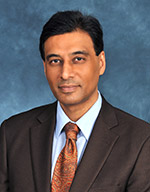17 Jul Cost-Effective Clinical Pathway Determined Hospitalized Patients’ Risk of Sleep Apnea
 MedicalResearch.com Interview with:
MedicalResearch.com Interview with:
Sunil Sharma, M.D
Associate professor of pulmonary medicine
Sidney Kimmel Medical College at Thomas Jefferson University
Medical Research: What is the background for this study? What are the main findings?
Dr. Sharma: Obstructive sleep apnea (OSA) is a highly prevalent disorder with significant cardiovascular implications. In this condition the patient may repeatedly quit breathing during sleep, sometimes hundreds of times, leading to loss of oxygen and frequent arousals throughout the night. OSA has been associated with high blood pressure, congestive heart failure, coronary artery disease, arrhythmias and stroke, among other conditions. While overall awareness is improving, the condition is under-recognized in hospitalized patients. Due to multiple co-morbid conditions these patients may be at higher risk for complications. Recent studies have also shown that early recognition of OSA in hospitalized patients may reduce readmission rates. In our study, we used a simple and cost-effective clinical pathway to determine high-risk patients. Of the 149 patient’s determined to be high risk by our protocol, 128 (87%) were confirmed with the diagnosis by a polysomnography (gold standard test). Furthermore, data derived from a simple and cost-effective oxygen measuring device (pulse-oximeter) was found to co-relate well with the polysomnography.
Medical Research: What should clinicians and patients take away from your report?
Dr. Sharma: Obstructive sleep apnea is common but under-recognized condition in hospitalized patients. Not only can it increase risk of complications in these patients but early recognition and treatment has been found to reduce readmission rates. Clinicians should have a high index of suspicion and develop simple protocols to screen their patients in the hospital.
Medical Research: What recommendations do you have for future research as a result of this study?
Dr. Sharma: This is data from a single, tertiary care teaching hospital. To confirm that these clinical pathways are applicable in all settings a multi-centric study is recommended.
Citation:
Obstructive Sleep Apnea in Obese Hospitalized Patients: A Single Center Experience
Journal of Clinical Sleep Medicine Volume: 11 Number: 07
http://dx.doi.org/10.5664/jcsm.4842
[wysija_form id=”3″]
Sunil Sharma, M.D (2015). Cost-Effective Clinical Pathway Determined Hospitalized Patients’ Risk of Sleep Apnea
Last Updated on July 17, 2015 by Marie Benz MD FAAD
